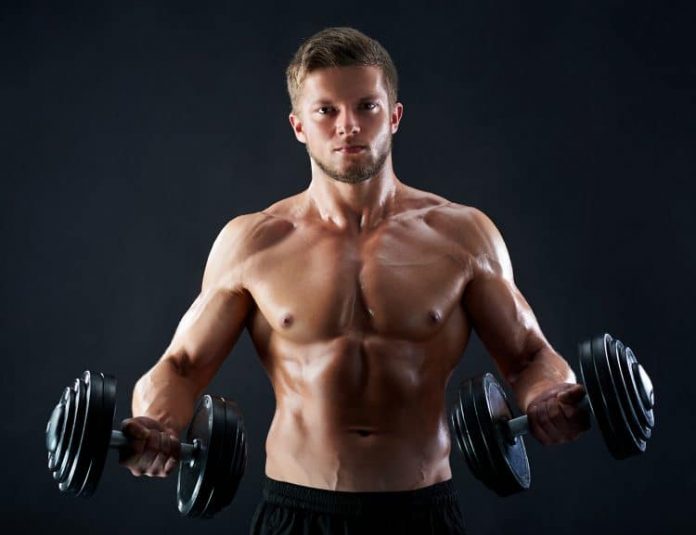Anyone who is a regular attendee at a gym will probably have a set program to follow each week. Some choose to break things up by muscle group: chest; arms; back; legs, for example. Others follow a slightly broader push, pull, legs, full body workout routine.
While some industry experts will claim the push/pull split is the most effective because it groups various muscle groups together and will allow for more effective recovery, breaking things down into more specific groups can still be just as good.
But when you want to torch your entire body in one hit, only a full body workout will do. A full body workout is a great option for the last gym session of the week, following a couple of upper body workouts and a serious leg session, with some core and abs work thrown in to each one.
What Is A Full Body Workout?
Full body workouts, as their name literally implies, work your entire body. Not only does this make them a time saver, but they’re documented as being more beneficial for building strength and muscle.
This is because when you workout just your upper body, for example, you’re not building up the muscle in your lower body. The lower body may eventually become too weak to support the extra muscular weight of the upper body, potentially causing injury.
Full body workouts negate this problem, working all major muscle groups equally. They can also be used as excellent body fat burners at the same time. Put simply, you need to be adding full body workouts into your routine.
Full Body Workout Tips
As with anything gym-related, you don’t want to cause injury to yourself. And the best way to avoid injury is to forget about seeing how much weight you can lift and instead focus on lifting a lighter weight correctly. The right form and technique applied to your full body workout is going to get you far further in your strength-building journey, compared to if you try to lift too much, cause yourself an injury and you can’t attend the gym for several weeks.
You don’t necessarily need to perform all of these full body workout exercises every single time you go to the gym, but aim to include them in your workout routine throughout your week, as they are essential for effective muscle building.
It’s always said that if you’re looking to build muscle, you should aim to complete a higher number of reps of each full body workout movement to enter a hypertrophy state. This means performing 10-12 reps of each exercise for 3-4 sets, maybe even 5. If you go down this route, it’s perfectly fine to keep the weight a little lighter.
If you’re looking to build strength, you’re free to increase the weight (while still keeping it manageable) but perform fewer reps. Anything from 5 – 8 reps is perfectly valid, and you only need to perform 3-4 sets.
Best Full Body Workouts & Exercises
Rather than provide example workout sessions, we’re going to round-up the best exercises and movements that you can include and bundle together into an effective full body workout routine. Naturally, we’ve included compound exercises – the ones that work multiple muscle groups at the same time – along with some others that either work a few muscle groups at once, or complement others and can be worked into a superset.
Deadlifts
Deadlifts are the daddy of weightlifting moves. They target several muscles at the same time, including your quads, glutes, calves and hamstrings in your legs, your mid-back and upper-back and even the traps. They’ve also been documented to burn more fat and calories than cardio workouts, because they require an incredible amount of energy to perform.
It’s this extra level of effort required that reinforces the notion of not lifting too heavy, too quickly. Try to lift too much and you really do risk causing yourself a nasty injury, so start off light to get the technique right before progressing.
How to perform this full body workout: To perform a deadlift, get yourself into a squat position and grab the barbell (or dumbbells or kettlebells, depending on what you choose to lift) with your hands around shoulder-width apart. Stand with your feet underneath the bar and try to keep your shins as straight as possible. It’s ok to bend your knees a little, but too much will end up engaging the quads more, and this movement is more about glutes and hamstrings. Brace your upper body by locking down your shoulder blades.
Once you feel secure and stable: it’s time to lift. Push through your feet and raise your upper body from the hip joint, as opposed to using your back to bring you up. Keep the bar as close to your body at all times during the lift. You can even have it physically touch you so you’re sliding it up and down your legs to make it easier.
Make sure to keep the tempo slow and controlled throughout the entire duration of the movement. With regards to grip, you ideally want to be using an overhand grip as much as you can. If you find the weight becomes a little too much on your third or fourth set, for example, you can switch to an overhand-underhand grip to help with the load.
Barbell Back Squat
While the barbell back squat can definitely be considered a fundamental lower body movement, it requires the use of some upper body muscles too, so can certainly fit into any well-rounded full body workout routine.
As with deadlifts, there is plenty that could go wrong with the back squat if performed incorrectly or with too much weight loaded onto the bar, so ensure you have the technique nailed before you think about progressing.
How to perform this full body workout: Start with the barbell set just below shoulder height on the squat rack. Step under it and have it rest on your shoulders. Lift up and take a couple of steps back. Bring your pelvis in and brace your core. You want to keep this same solid core throughout the duration of the movement.
Take a deep breath in and squat down. To squat effectively, ensure your knees push outwards and almost imagine you’re just sitting down. Sit into the squat until your hips are just below your knees. If this feels too deep to push back up from, you at least want to bend your knees to a 90-degree angle.
Keeping the breath held in – it helps with stability – push up through your heels until you’re back at your starting position, where you can exhale (you can exhale as you lift up if you find it helps you more).
Throughout the duration of the movement: you want to keep your chest as upright as possible. It helps to remain looking forward at a point on the wall or in the gym in front of you, as opposed to looking down at your feet.
Renegade Rows
Any kind of rowing movement is great for your back and biceps, and renegade rows more than fit the bill for both of these muscle groups. But they also target your core muscles because they combine a rowing movement with a plank hold. It sounds tricky – and it is – but add it into your full body workout routine and you’ll be feeling the burn.
All you need to perform renegade rows is a set of dumbbell weights. Start off with a light weight so you can perfect the exercise, before increasing the weight so that you can start building more muscle.
How to perform this full body workout: To perform renegade rows, get yourself into a press up position – body straight from head to heels, with no bend in the back and arms shoulder width apart – and with a hand gripped around each dumbbell. Then, raising one arm at a time – we’d recommend alternating arms, but you’re free to work one arm at a time if you wish – bring your elbow back towards your hip.






























